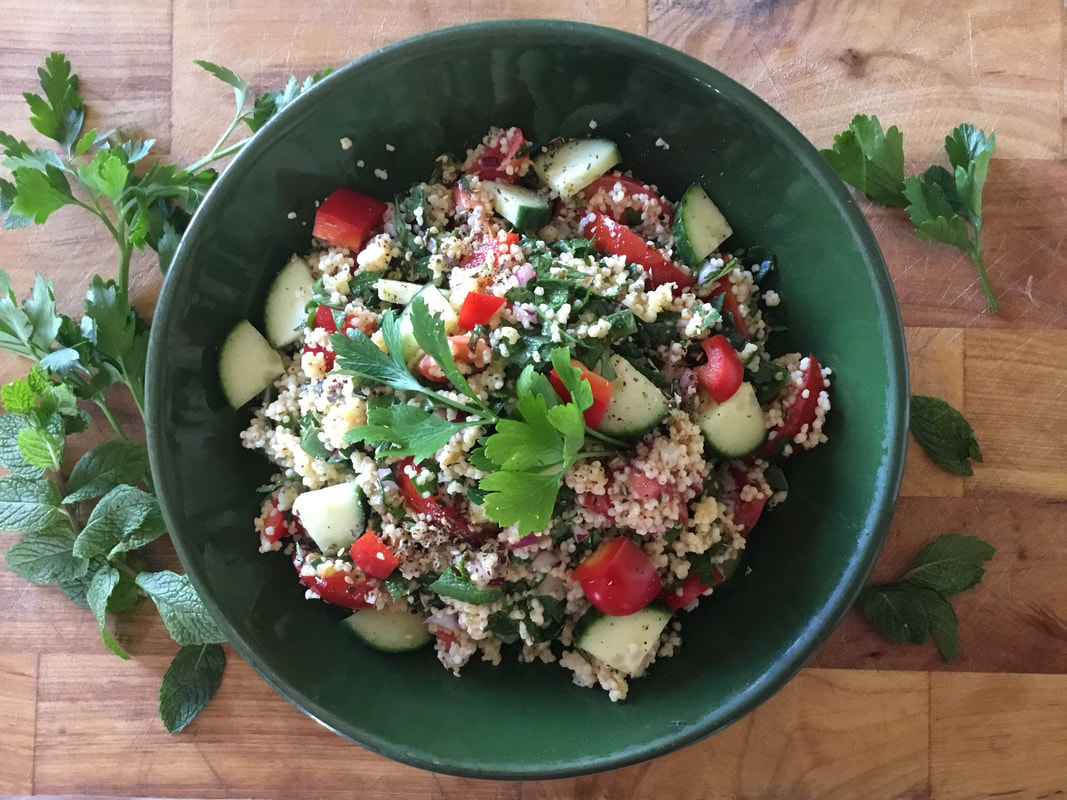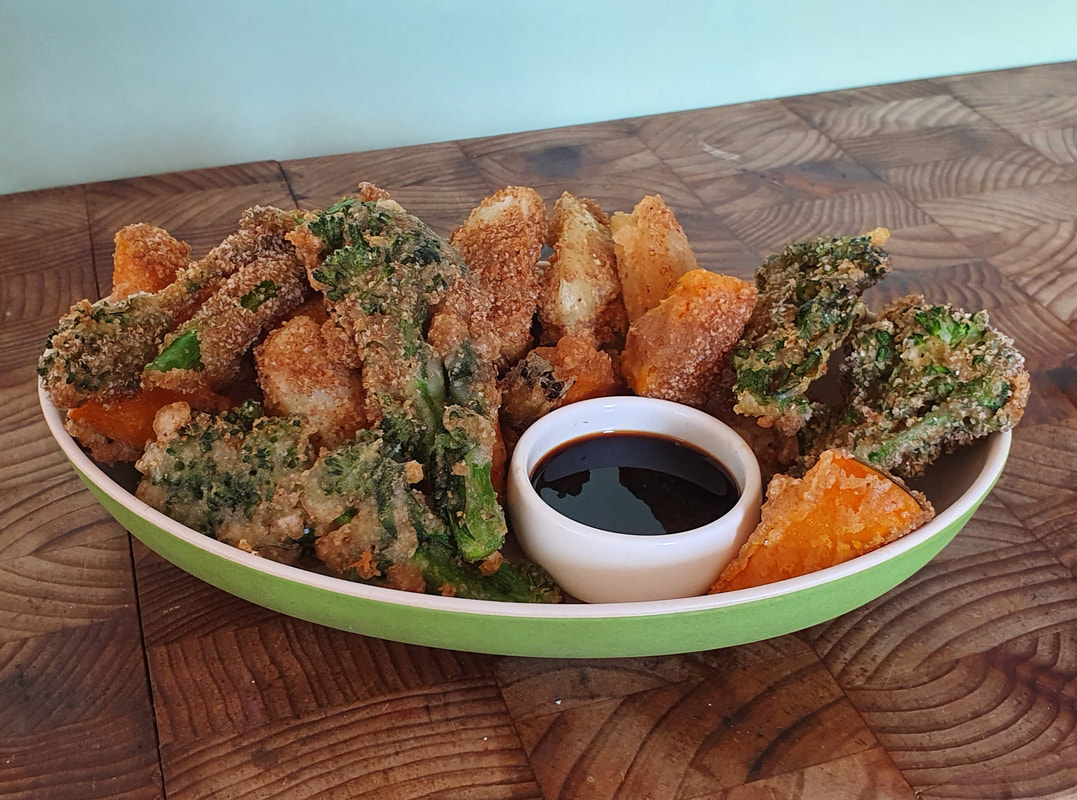|
For the first recipe of Winter 2024 I wanted to make a soup. Something versatile that most of us could produce with a quick pantry raid.
And so we give you Tuscan Bean & Barley Soup. It's my spin on a classic White Bean Soup & involves a variety of dried beans and some pearled barley. It's a versatile recipe with wiggle room to incorporate the beans and grains you have on hand in whatever ratio you fancy. The only caveat would be to stick to beans that hold their shape when cooked and don’t get too mushy. The reason this recipe works is because even though different beans and grains I use need different cooking times, the ones that cook the quickest don’t dissolve into the soup by the time the slower cooking pulses are done. This is such a gloriously comforting soup. We look forward to you trying it out - let us know how it goes!
0 Comments
While tabbouleh traditionally uses cracked wheat (called bourgal or bulgar), ours calls for millet. This not only makes it gluten free, it really shows off millet's capabilities of absorbing flavours beautifully whilst staying fluffy and light. This is an important factor, because so often Sydney summers mean that our salads don't maintain their vibrancy after half an hour spent on the picnic rug or BBQ buffet. Not so with millet tabbouleh; it maintains that freshly made quality for longer.
You'll also notice this Tabbouleh recipe asks for za'atar. It's by no means a traditional Tabbouleh ingredient, but I find it really lifts the whole thing and delivers depth and interest. So come on a little millet adventure with us. When cooking queries regarding millet were recently brought up by two separate customers on the same day, we thought it might be a sign to serve our customers up a millet recipe. Or maybe even two!
Millet porridge is a common breakfast in several countries. It's also used as a high protein, nutritious alternative to rice, pearl barley and couscous. One of the conversations we had with a customer was about how to properly cook millet porridge. Some people find that the end result is a little firm, even after cooking thoroughly. After some trial and error, I think I've cracked the code. Huddle up: There are two methods that give you a satisfyingly creamy porridge, albeit with differing textures. The first method involves leaving the millet grains whole, but soaking them overnight before then cooking them for about 20 to 30 mins. It's basically the same method I use for steel cut oats, and the result is similar- a robust bowl of goodness. The second method is quicker and gives you a smoother, silkier porridge. You simply put the raw millet grains in a food processor, blender or coffee grinder and whiz it until the grains are much finer - about halfway to being a flour. Then you cook it in milk and water for 15 minutes. This is my preferred method, and the one I use below, but you might find you prefer the whole grain version. We now stock teff flakes! I was really looking forward to diving into an experiment with our new gluten free teff flakes. I'd never eaten them, nor cooked with them before.
The obvious use for teff flakes is porridge, or adding them to a cake or muffin batter. But I was feeling daring and intrepid…I wanted to push the boat out a little. So, taking inspiration from their breadcrumb-like texture, I decided to use teff flakes as a substitute for breadcrumbs. Not satisfied with that alone, I thought I'd make them completely gluten-free. Go hard or go home, right? Luckily for us all, the experiment was a success. The combination of rice flour, cornstarch, carbonated water and teff flakes made for a delightfully light, deafeningly crunchy tempura batter. It's a winner! What's the difference between semolina porridge and semolina pudding? What time of day you eat it! Comforting, creamy semolina can be enjoyed at the beginning or the end of your day. Or both:)
Semolina is fine durum wheat flour. Often used in pasta and pizza dough, it's been around since ancient Roman times. Around the world it has various names like cream of wheat, farina and malt-o-meal. It's famously used in the delicious classic semolina cake. When we make this at our house we enjoy a funny little family tradition of serving the porridge on a flat plate rather than a bowl. A spiral of honey is drizzled from the outside into the centre, and we follow the spiral with our spoons, eating from the outer edge into the middle. |
Categories
All
Archives
January 2024
|






 RSS Feed
RSS Feed